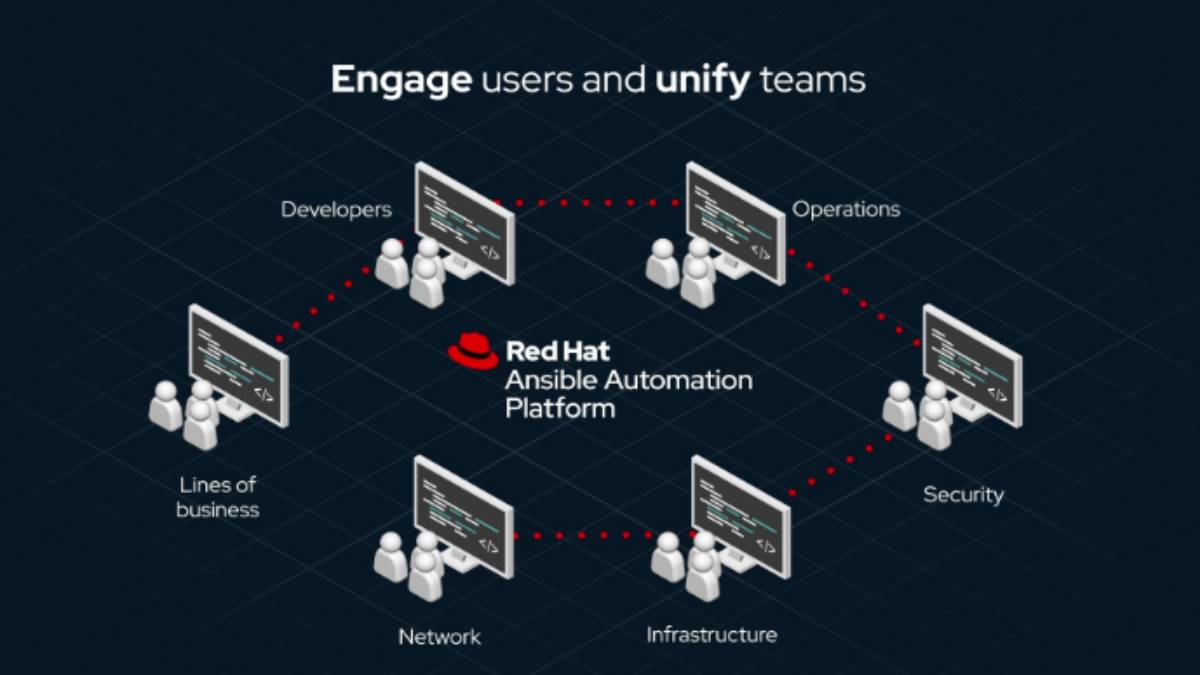Introduction
Ansible Automation Platform lifecycle is the structured process that DevOps engineers follow to design, deploy, manage, and improve automation solutions. This guide explains each phase, addressing the core question: how can you effectively navigate the Ansible Automation Platform lifecycle to optimize automation, increase efficiency, and maintain infrastructure reliability?
Table of Contents
-
Planning and Assessment (H2)
-
Design and Architecture (H2)
-
Development and Playbook Creation (H2)
-
Testing and Validation (H2)
-
Deployment and Execution (H2)
-
Monitoring and Feedback (H2)
-
Maintenance and Updates (H2)
-
Security and Compliance (H2)
-
Optimization and Scaling (H2)
-
Best Practices Summary (H2)
-
Common Pitfalls (H2)
-
Future Evolution of Ansible Automation Platform lifecycle (H2)
-
Conclusion
-
FAQ
1. Planning and Assessment
Before implementing the Ansible Automation Platform lifecycle engineers assess the current environment. They identify automation needs, compatibility, infrastructure inventory, and existing DevOps pipelines. LSI and semantic keywords here include infrastructure inventory, environment audit, automation readiness, infrastructure as code, and DevOps assessment.
2. Design and Architecture
In this phase DevOps engineers design automation workflows and modular playbooks. Topics include role-based structure, modular tasks, reusable components, variables, inventory management, and dynamic inventories. Relevant keywords: reusable roles, dynamic inventory, playbook structure, architecture planning, modular automation.
3. Development and Playbook Creation
Here engineers write Ansible playbooks, roles, and module code. They follow YAML best practices, version control, idempotency, error handling. Semantic terms: version control, idempotent playbooks, error handling, YAML syntax, code review.
4. Testing and Validation
Testing is critical in the Ansible Automation Platform lifecycle. Engineers use sandbox environments, unit tests with Ansible Molecule, integration testing, linting, and continuous integration pipelines. Related keywords: Molecule tests, linting, CI/CD, sandbox environment, quality assurance.
5. Deployment and Execution
This phase covers orchestrating playbooks across multiple environments. Engineers schedule playbooks, manage pull/push models, leverage control nodes and execution nodes. Semantic terms: orchestration, execution model, control node, automation controller, deployment pipeline.
6. Monitoring and Feedback
Once deployed monitoring kicks in. Engineers collect logs, metrics, reports, error alerts. They use tools like Ansible Tower/AWX, external monitoring stacks. Keywords: log collection, performance metrics, feedback loop, error alerts, automation dashboard.
7. Maintenance and Updates
Infrastructure drift and software updates require maintenance. Engineers patch hosts, update playbooks, rotate keys, improve roles. Terms: configuration drift, patch management, playbook versioning, role updates, security patches.
8. Security and Compliance
Security must be integrated. Engineers manage credentials via Ansible Vault, enforce compliance checks and standardized baselines. Keywords: Ansible Vault, compliance auditing, credential management, role-based access control, security automation.
9. Optimization and Scaling
As usage grows optimization becomes key. Engineers improve performance, parallel execution, asynchronous tasks, scale control nodes, cache dependencies. Semantic terms: performance tuning, parallel execution, scaling strategies, dependency caches, automation efficiency.
10. Best Practices Summary
-
Use modular roles with descriptive names
-
Store sensitive data securely in Vault
-
Implement CI/CD pipelines for automation
-
Enforce code review and linting
-
Test playbooks regularly with Molecule
Focus on idempotent, reusable assets for maintainability.
11. Common Pitfalls
-
Overly monolithic playbooks
-
Hard‑coded variables reducing flexibility
-
Ignoring testing phases
-
Poor inventory management leading to execution failures
-
Skipping updates causing drift or security risks
12. Future Evolution of Ansible Automation Platform lifecycle
Ansible continues evolving toward event-driven automation, predictive remediation, AI‑assisted playbooks, and deeper Kubernetes integration. This shapes future lifecycle phases around observability, feedback, and intelligent scaling.
Conclusion
The Ansible Automation Platform lifecycle provides a clear roadmap for DevOps engineers to deliver reliable, secure, and efficient automation. By embracing structured phases—from assessment and design to optimization and evolution—teams uphold infrastructure as code principles, drive continuous improvement, and ensure long-term maintainability.
FAQ
1. What is the Ansible Automation Platform lifecycle
It is a step‑by‑step process including planning, development, testing, deployment, monitoring, maintenance, security, optimization, and evolution.
2. Why modular roles matter
Modular roles promote reusability, easier testing, clear architecture, and better maintainability.
3. How do I test playbooks
Use Ansible Molecule in CI pipelines alongside lint tools like ansible-lint and functional testing environments.
4. What prevents configuration drift
Regular execution, drift detection workflows, and consistent maintenance via playbooks fix drift issues.
5. How is security handled
Use Ansible Vault for secrets, implement RBAC, run compliance checks, and audit logs.
6. When should I scale automation
Scale when execution delays arise, infrastructure grows, or you hit resource limits on control nodes.
7. Does Ansible support event-based automation
Yes evolving toward event-driven flows integrated with webhook, serverless, and AI triggers.
8. How maintain idempotency
Avoid side effects, use checks and conditional logic, and rerun playbooks without changing preserved state.
